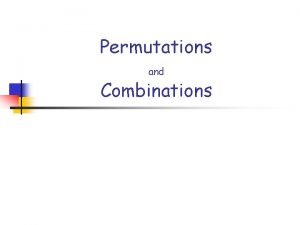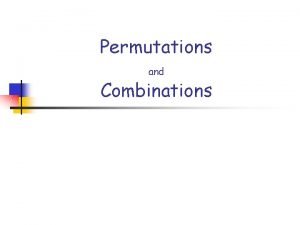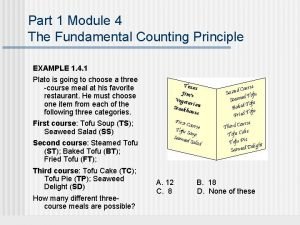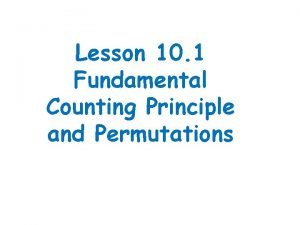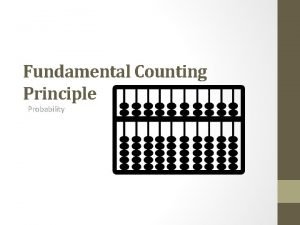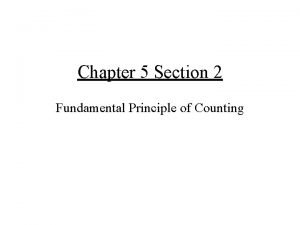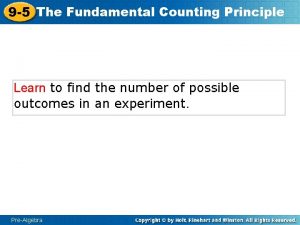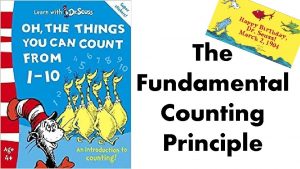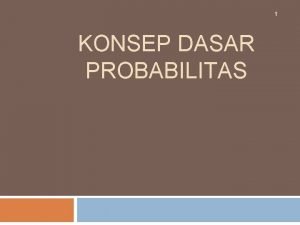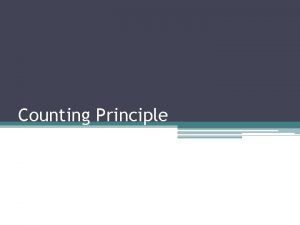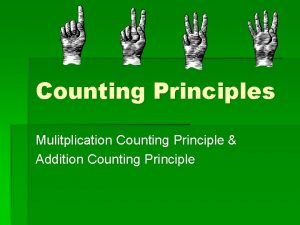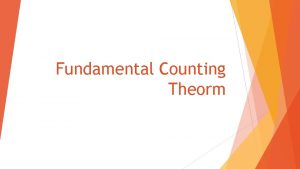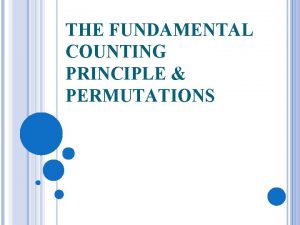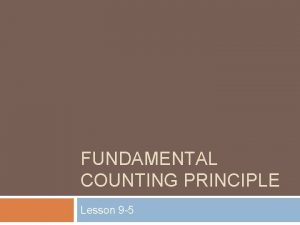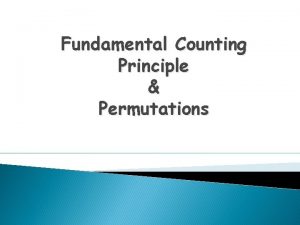Section 3 4 Counting Principles Fundamental Counting Principle








- Slides: 8

Section 3. 4 Counting Principles

Fundamental Counting Principle If one event can occur m ways and a second event can occur n ways, the number of ways the two events can occur in sequence is m • n. This rule can be extended for any number of events occurring in a sequence. If a meal consists of 2 choices of soup, 3 main dishes and 2 desserts, how many different meals can be selected? Soup Dessert Main Start 2 • 3 • 2 = 12 meals

Factorials Suppose you want to arrange n objects in order. There are n choices for 1 st place. Leaving n – 1 choices for second, then n – 2 choices for third place and so on until there is one choice of last place. Using the Fundamental Counting Principle, the number of ways of arranging n objects is: n(n – 1)(n – 2)… 1 This is called n factorial and written as n!

Permutations A permutation is an ordered arrangement. The number of permutations for n objects is n! n! = n (n – 1) (n – 2)…. . 3 • 2 • 1 The number of permutations of n objects taken r at a time (where r £ n) is: You are required to read 5 books from a list of 8. In how many different orders can you do so? There are 6720 permutations of 8 books reading 5.

Combinations A combination is a selection of r objects from a group of n objects. The number of combinations of n objects taken r at a time is You are required to read 5 books from a list of 8. In how many different ways can you choose the books if order does not matter. There are 56 combinations of 8 objects taking 5.

1 2 3 Combinations of 4 objects choosing 2 1 3 1 4 2 3 4 4 Each of the 6 groups represents a combination. 4

1 2 4 3 Permutations of 4 objects choosing 2 1 2 3 1 1 2 3 3 4 1 1 4 4 2 2 4 4 Each of the 12 groups represents a permutation. 1 2 3 2

Homework: 1 -20 all pgs. 157 -158 Day 2: 21 -40 all pgs. 158 -159
 How many combinations with deck of cards
How many combinations with deck of cards Counting principle permutations and combinations
Counting principle permutations and combinations Fundamental theorem of counting
Fundamental theorem of counting Fundamental counting principle formula
Fundamental counting principle formula Using tree diagram
Using tree diagram Definition of fundamental counting principle
Definition of fundamental counting principle Fundamental counting principle examples
Fundamental counting principle examples Fundamental counting principle
Fundamental counting principle The principles of probability
The principles of probability
